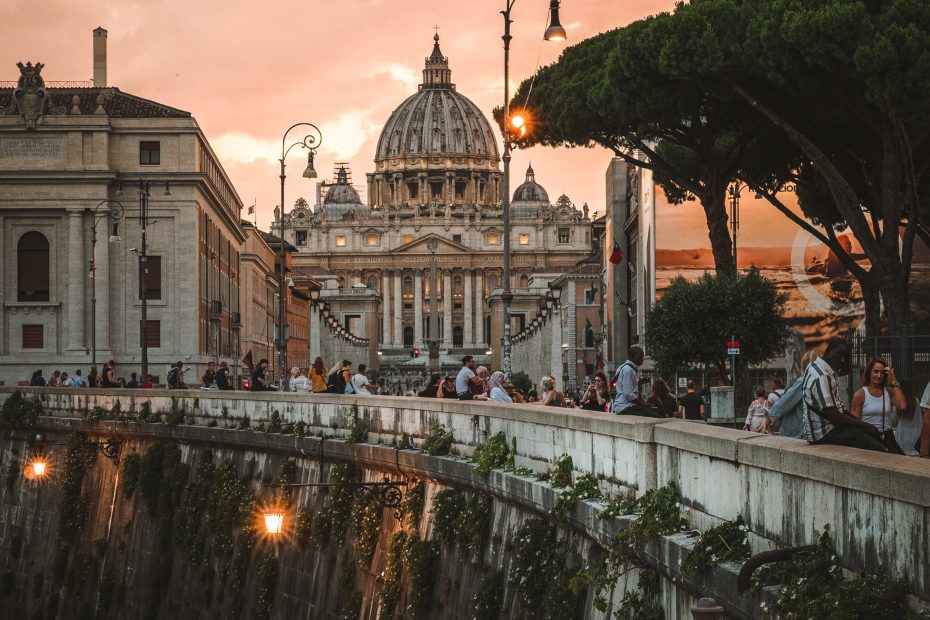Table of Contents
Introduction
The Vatican holds some of the most extensive art collections in the world. Its museums display works spanning the centuries and an array of cultures, offering visitors a breathtaking experience. Exploring these treasures provides fascinating glimpses into human history, creativity, and spirituality.
The Vatican Museums
The Vatican Museums boast one of the largest art collections globally, with over 70,000 works. Pope Julius II first established these museums in the early 16th century. Today, the complex contains 12 museums and galleries, the Sistine Chapel, and several architectural and natural sites. Spread over 5.5 hectares, it would take weeks to admire every exhibit fully! Over 6 million people visit annually, making it one of the most visited museums worldwide.
The Sistine Chapel
Perhaps the most iconic site in the Vatican museums is the Sistine Chapel. Commissioned by Pope Sixtus IV around 1473, its elaborate frescoes took decades to complete. Michelangelo spent four years painting the breathtaking ceiling, completed in 1512. His powerful depiction of biblical stories in panels like The Creation of Adam has become a celebrated masterpiece. Twenty-four years later, Michelangelo added the massive Last Judgment painting behind the altar.
The Raphael Rooms
The four Raphael Rooms feature outstanding frescoes by Raffaello Sanzio, known as Raphael. Summoned by Pope Julius II in 1508, Raphael spent his last 12 years decorating these rooms until his death in 1520. The most famous one, the Room of the Segnatura, houses the magnificent School of Athens fresco portraying Plato, Aristotle, and other Greek philosophers. The other rooms depict important biblical and papal events through Raphael’s masterful use of perspective and movement.
The Pinacoteca
The Vatican’s art gallery, called the Pinacoteca, houses paintings collected over centuries. Beginning as a private papal collection, over 460 paintings now fill 18 rooms. Visitors can admire works by revered artists like Giotto, Leonardo da Vinci, Caravaggio, Titian, and Van Gogh. The collection represents the progression of artistic styles from the Middle Ages to the 19th century through the works’ diverse themes and techniques.
The Gregorian Egyptian Museum
Consisting primarily of artifacts gifted by Egypt to the Popes, the Gregorian Egyptian Museum was founded in 1839. Over 10,000 pieces constitute its collection, including mummies, sarcophagi, funerary steles, inscriptions, and sculptures. Highlights include the Tomb of Nefertari wall paintings and the Book of the Dead papyrus manuscript. The exhibits provide insights into ancient Egypt’s culture, language, and history.
The Pio Clementino Museum
The Pio Clementino Museum, established in 1771, houses some of the Vatican’s most prized Greek and Roman sculptures. The renowned Laocoön sculpture depicting Laocoön and his sons locked in deathly struggle with sea serpents is one of the standouts. Others include the Apollo Belvedere depicting the sun god Apollo and the 1st century AD mosaic La Navicella. Like the others, this museum also provides a trove of knowledge about the ancient world.
The Chiaramonti Museum
With over 1,000 sculptures and inscriptions, the Chiaramonti museum contains the Vatican’s largest collection of Roman antiquities. Founded in the early 1800s by Pope Pius VII, it takes its name from his family name. Exhibits like the colossal statue Augustus of Prima Porta provide insights into ancient Roman society, history, and mythology through their life-like depictions of emperors, statesmen, gods, and daily life.
The Ethnological Missionary Museum
Founded in Vatican City in 1926, the Ethnological Missionary museum showcases artifacts from around the world amassed through missionary work. Its over 80,000 objects include textiles, carvings, jewelry, and ritual items from the Americas, Oceania, Africa, and Asia. This extensive non-Western collection offers visitors the chance to learn about diverse world cultures and religious practices.
Vatican Historical Museum
Tracing the Vatican’s history right from early Christian times, the Vatican Historical museum was founded in 1973. Exhibits include Pope Alexander VI’s preserved corpse, the marriage certificate of Mary Queen of Scots, andcardinality seals dating back hundreds of years. The collection of over 100,000 items provides an unparalleled look into centuries of compelling history bound to the Vatican and Catholicism.
Architectural and Natural Sites
Beyond its museums, the Vatican also boasts architectural landmarks and natural beauty. The exquisitely landscaped Vatican Gardens provide cooling respite for popes. St. Peter’s Square, designed by Bernini, and St. Peter’s Basilica represent awe-inspiring baroque architecture. These sites complete the Vatican’s unforgettable cultural experience.
Conclusion
A visit to the Vatican museums immerses you in humankind across millennia and continents through its endless art treasures. Its galleries, chapels, and architectural landmarks offer a rich sensory experience that inspires and enlightens. A trip to Rome is not complete without spending days at this cultural extravaganza of the Vatican.
FAQs
Q: How many museums are part of the Vatican complex?
A: There are 12 museums and galleries that are part of the immense Vatican museums complex.
Q: Does the Vatican museums ticket include entry to St. Peter’s Basilica?
A: No, the Vatican museums ticket only covers the museums, galleries and sites like the Sistine Chapel that are part of the Vatican museums. St. Peter’s Basilica requires a separate free entry ticket.
Q: How long does it take to see all of the Vatican museums?
A: It takes around 4-5 hours to do a comprehensive tour of all the Vatican museums. To fully admire every piece would take weeks or months.
Q: Are there restaurants inside the Vatican museums?
A: Yes, there is a cafeteria style restaurant in the Pinecone Courtyard of the Vatican museums for drinks, snacks and meals. There are also snack bars and cafes at a few other spots.
Q: What is the dress code for the Vatican museums?
A: There is no formal dress code but visitors are advised to dress modestly covering shoulders and knees. Avoid revealing or tight clothing.
